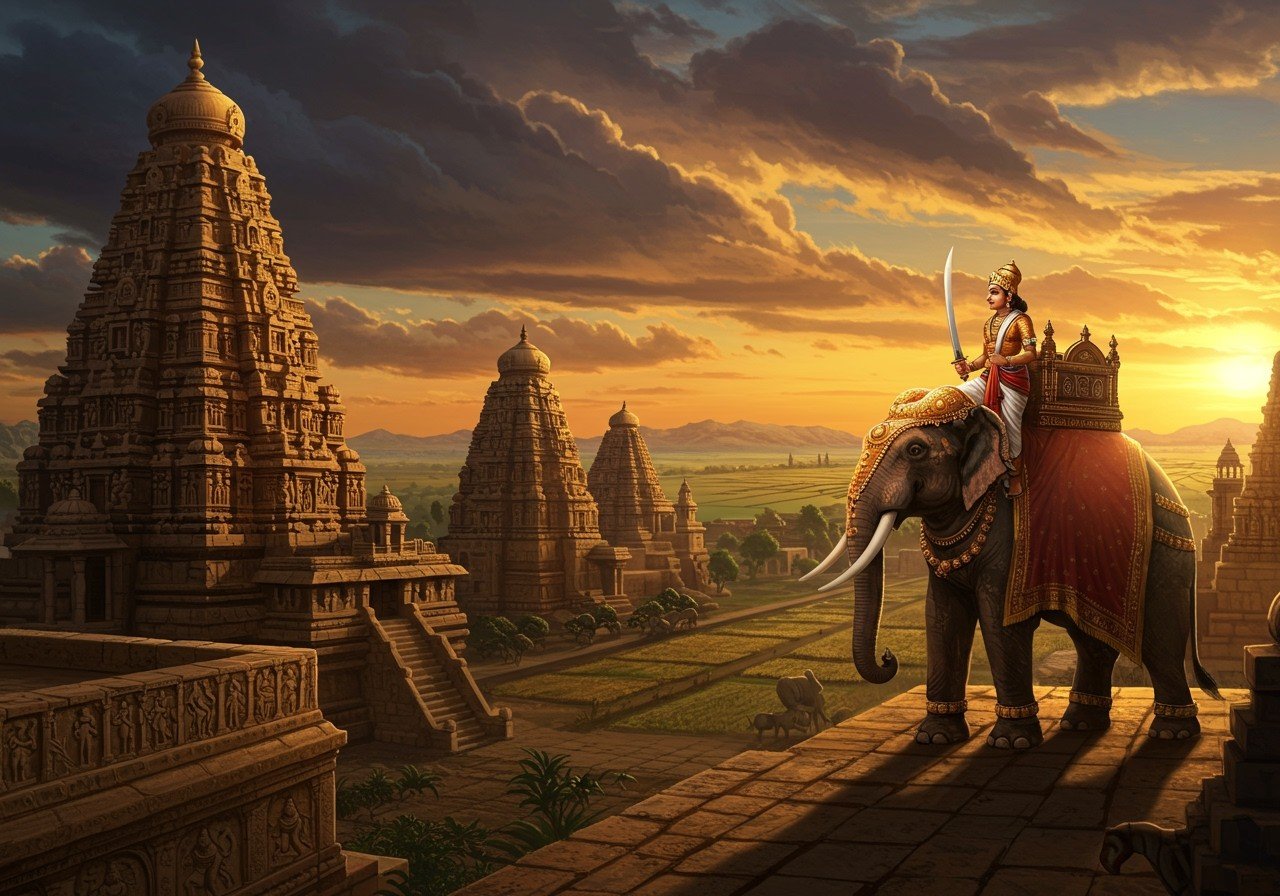
The Western Ganga Dynasty, a significant power in ancient Karnataka, reigned from approximately 350 to 999 CE. Their rule, initially from Kolar and later Talakad in Mysore district, left an indelible mark on the region’s culture, art, and politics. This article delves into their history, prominent rulers, and enduring legacy.
Origins and Rise of the Western Ganga Dynasty
Emerging around 350 CE, the dynasty’s name, derived from the sacred Ganga River, symbolizes their claimed descent from the river goddess Ganga. Konganivarman Madhava founded the dynasty, starting in Kolar under the initial shadow of Pallava influence. After consolidating their territories, they established their capital at Talakad. Their early history is marked by power struggles and strategic alliances with neighboring kingdoms.
Illustrious Rulers of the Western Ganga Dynasty
- King Konganivarman Madhava (circa 350-370 CE): The founder of the dynasty, he laid the groundwork for their future prominence. He established the kingdom’s initial territory and navigated complex political landscapes.
- King Durvinita (495-535 CE): A renowned patron of the arts and literature, he is credited with translating the Vaddakatha into Kannada, significantly contributing to the language’s literary development. His reign also witnessed military successes and territorial expansion.
- King Srivikrama (690-726 CE): Known for his piety and devotion to Jainism. His reign saw the construction of several Jain temples, and his patronage further solidified the religion’s influence within the kingdom.
- King Shripurusha (726-788 CE): A powerful warrior king, he successfully defended his kingdom against the Rashtrakutas and Pallavas, consolidating the Western Ganga hold on their territories. His reign also saw a flourishing of art and culture.
- King Rachamalla I (816-843 CE): Remembered for his military campaigns and administrative reforms. He implemented policies that strengthened the kingdom’s governance and improved the lives of his subjects.
- King Nitimarga I (853-870 CE): A shrewd strategist, he expanded the kingdom’s boundaries and forged important political alliances, further solidifying the Western Ganga position in the region.
- King Butuga II (938-961 CE): Played a key role in the Battle of Takkolam, aligning with the Cholas. This alliance significantly impacted the political dynamics of the region.
- King Marasimha II (963-974 CE): Known for his contributions to Jainism and the construction of magnificent temples. His patronage of religious institutions further cemented the Western Ganga legacy.
Cultural and Religious Contributions
The Western Gangas were notable patrons of Jainism, evident in the numerous Jain temples and basadis built during their reign, including the renowned Shravanabelagola. While primarily associated with Jainism, they also supported Hinduism, contributing to both Shaivism and Vaishnavism. Their patronage of literature fostered the development of Kannada as a literary language, exemplified by works like the Chavundaraya Purana. Their distinctive architectural style and intricate sculptures are testaments to their artistic achievements.
Political and Military Prowess
Their military strength is evident in their numerous successful campaigns and the ability to defend their territories against formidable adversaries like the Rashtrakutas and Cholas. Strategic alliances with powerful kingdoms like the Chalukyas and Cholas played a vital role in their political landscape. Their efficient administration, characterized by a well-organized bureaucracy and land revenue system, contributed to political stability and economic prosperity, fostering growth in trade and agriculture.
Decline and Enduring Legacy
The rise of the Cholas in the 10th century marked the beginning of the Western Ganga decline. Internal conflicts and external pressures gradually weakened their hold, culminating in the defeat of their last significant ruler, Rachamalla IV, by the Cholas in 1004 CE. Despite their eventual downfall, their influence on the region’s culture, religion, and art remains profound. Their architectural marvels, literary contributions, and support for Jainism continue to shape Karnataka’s cultural identity.
Sacred Artifacts for Connoisseurs of History and Spirituality
For those seeking to connect with the rich spiritual heritage of the Western Ganga Dynasty, Poojn.in offers authentic ritual items and puja essentials. Explore our curated selection of:
- Ganga Shiva Murti (33 cm/13 inch): This meticulously crafted marble dust murti embodies the dynasty’s reverence for Lord Shiva and the sacred Ganga, reflecting the spiritual beliefs prevalent during their reign. Perfect for personal altars or collections.
- Lord Shiva Marble Dust Murti (5 inch): A smaller yet equally exquisite representation of Lord Shiva, ideal for personal worship or as a symbolic reminder of the Western Ganga Dynasty’s rich Shaivite traditions.
- Mangalam Camphor Tablets: Enhance your spiritual practices with the pure and aromatic Mangalam Camphor Tablets, available in convenient 10gm jars at Poojn.in.
Connect with us on WhatsApp at +91 7908548235 for bulk orders and wholesale inquiries.
Conclusion
The Western Ganga Dynasty’s reign stands as a testament to Karnataka’s rich and vibrant history. Their contributions to art, literature, religion, and politics continue to resonate today. Understanding their legacy provides valuable insights into the tapestry of India’s past and enriches our appreciation for Karnataka’s cultural heritage.


